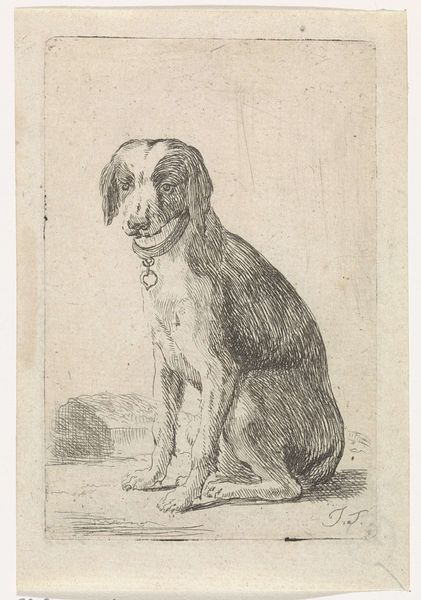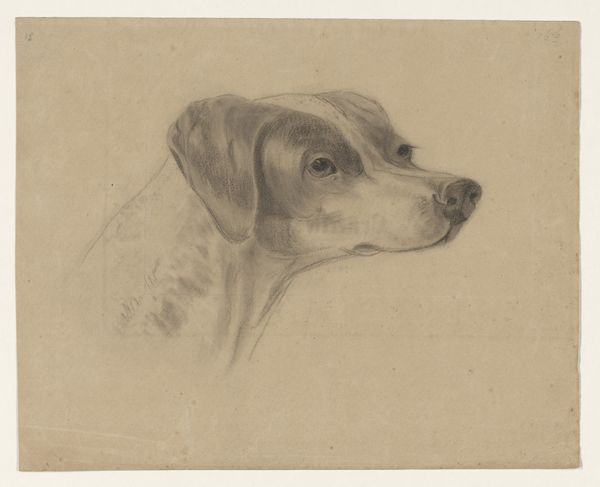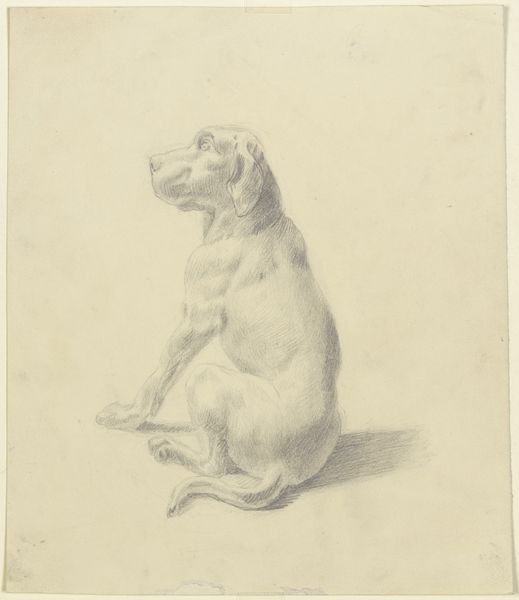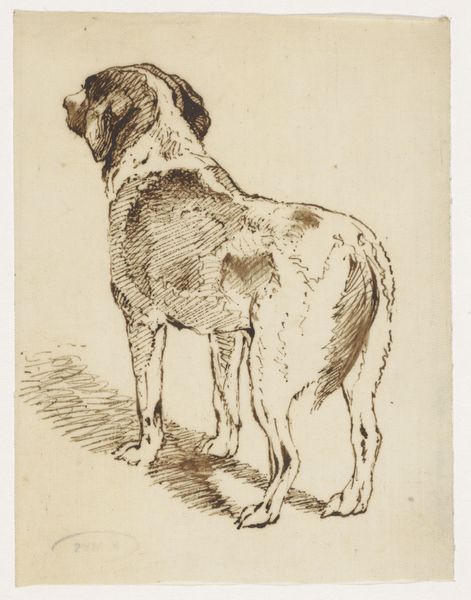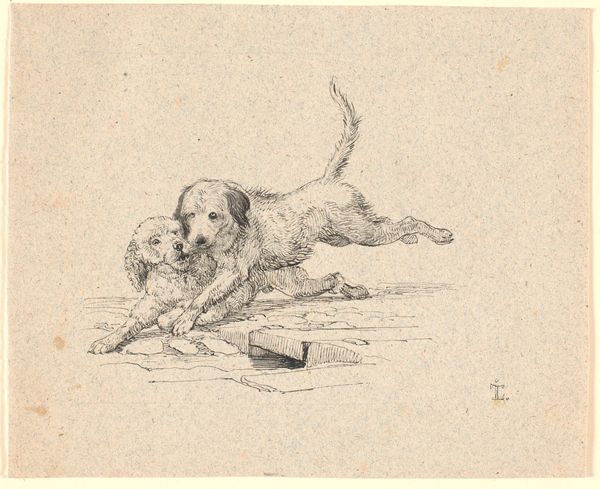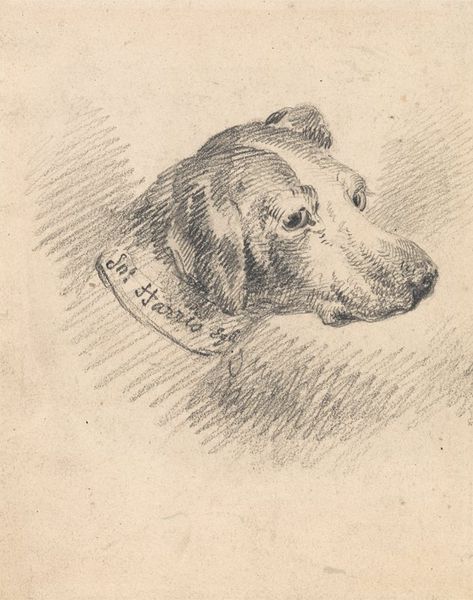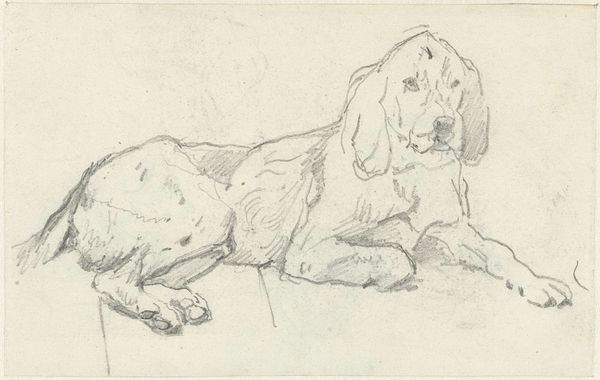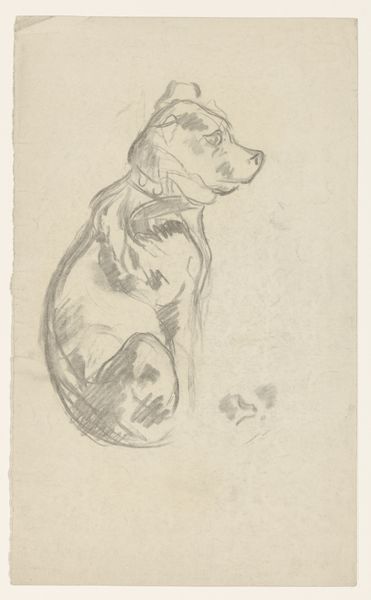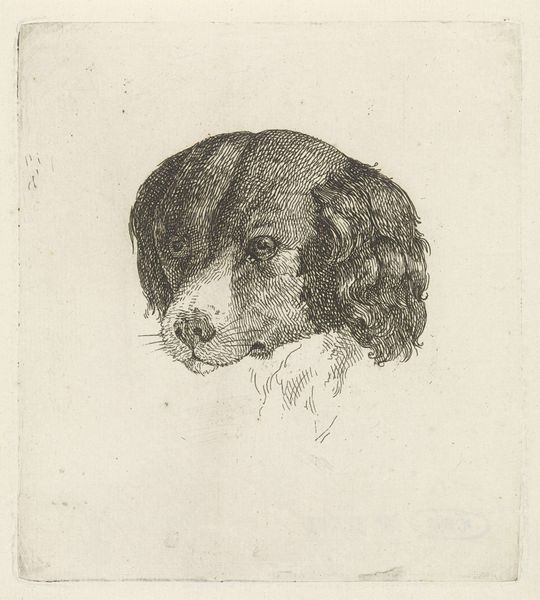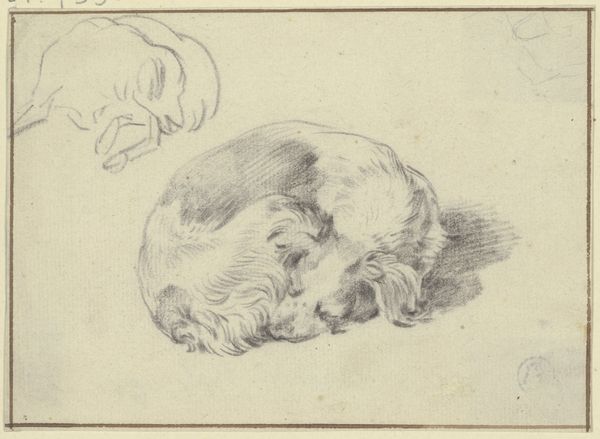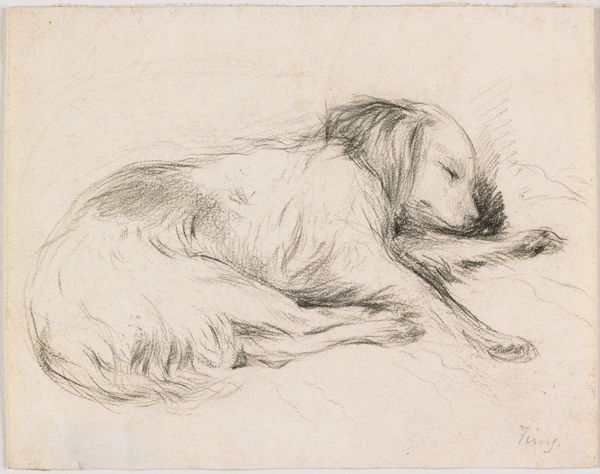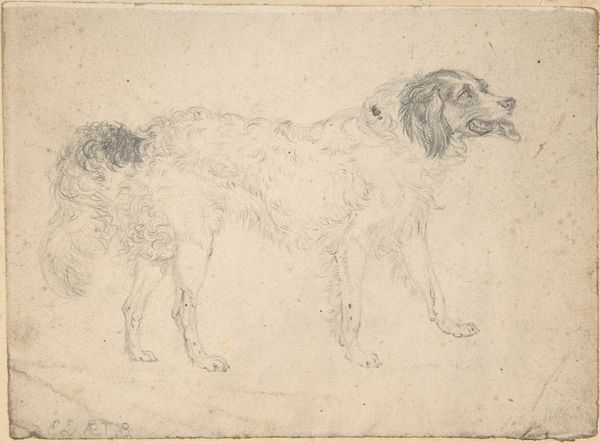
drawing, pencil
#
portrait
#
pencil drawn
#
drawing
#
facial expression drawing
#
light pencil work
#
pencil sketch
#
dog
#
botanical illustration
#
pencil drawing
#
pencil
#
animal drawing portrait
#
portrait drawing
#
pencil work
#
botanical art
#
realism
Dimensions: height 215 mm, width 208 mm
Copyright: Rijks Museum: Open Domain
Curator: Here we have Cornelis van Noorde’s “Liggende hond,” or “Reclining Dog,” created in 1777. The piece, held at the Rijksmuseum, employs the humble medium of pencil to capture a resting canine. What's your immediate reaction? Editor: My first thought? Serenity. It's got this quiet, almost contemplative feel. Like the dog's contemplating the mysteries of naps, or maybe chasing squirrels in its dreams. Curator: Interesting. Consider that pencil drawings like these were not always seen as independent artworks. They served practical functions: studies for larger paintings, pedagogical tools, or documents of the natural world. Think of the material scarcity: paper quality, pencil production, and the accessibility of these items shaping who could create and consume art. Editor: Right. But doesn't this almost… democratic quality add to its charm? The simplicity of the medium focuses all the attention on van Noorde's skill. Look at the shading around the dog's snout; there is such dimensionality to it using only pencil. The sensitivity! It feels like a very intimate portrait, not just of any dog, but a very specific, beloved one. Curator: I see what you mean. The directness of the pencil work creates a sense of immediacy. The "botanical art" feel highlights the trend during the 18th century of artists documenting their world in meticulous detail. Animal portraiture gained traction then; consider its context within scientific and artistic movements. Editor: You're talking about the Age of Enlightenment and increased observation, and it makes me consider this image again. The animal looks so vulnerable, but observant, patient, but so comfortable. Perhaps its also a sign of trust that van Noorde had access and proximity. The softness makes you just want to reach out and give him a scratch behind the ears! Curator: Indeed, this balance is appealing. The image invites us to reconsider labor, class, the means of creating such work in 1777 versus now. Editor: Thinking about it, I am still captivated by how something so simple can evoke such tenderness. It encourages me to go draw my dog. Or, find him for a cuddle. What a find! Curator: Precisely, this piece opens doors to broader conversations regarding the economic factors influencing creative output, but as well, the enduring and powerful appeal of capturing the everyday.
Comments
No comments
Be the first to comment and join the conversation on the ultimate creative platform.
